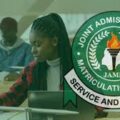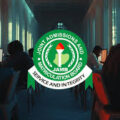Understanding Strategies and Tips
Perusing is a basic learning movement for school level courses. Relegated readings set you up for taking notes during addresses and give you extra models and detail that probably won’t be shrouded in class. Likewise, as per research, readings are the second most continuous wellspring of test questions (Cuseo, Fecas and Thompson, 2007).
Perusing a school course book successfully takes practice and ought to be drawn closer uniquely in contrast to perusing a novel, comic book, magazine, or site. Turning into a viable peruser goes past finishing the perusing in full or featuring text. There are different systems you can use to peruse actually and hold the data you read.
Consider the accompanying fast tips and thoughts to capitalize on your understanding time:
Plan time to peruse. Perusing is something simple to put off in light of the fact that there is in many cases no accurate due date. By planning a period every week to do your perusing for each class, you are bound to finish the perusing as though it were a task. Creating a review guide or set of notes from the perusing can assist with coordinating your reasoning as you read.
Put yourself in a good position. Pick an area that is helpful for perusing. Lay out a sensible objective for the perusing, and a period limit for how long you’ll function. These strategies cause perusing to feel sensible and make it simpler to get everything rolling and get done with perusing.
Pick and utilize a particular understanding system. There are numerous procedures that will assist you with effectively perusing and hold data (PRR or SQ3R – see the gifts and recordings). By deliberately picking a method for moving toward your perusing, you can start the initial step of test planning or paper composing. Keep in mind: great perusers make more grounded authors.
Screen your perception. When you finish a part, ask yourself, “What is the primary thought in this segment? Might I at some point answer a test question about this subject?” Questions toward the finish of sections are especially great for concentrating and for surveying your appreciation. Assuming that you are experiencing issues reviewing data or responding to inquiries concerning the text, scan back through the text and search for central issues and replies. Self-rectification procedures like returning to the message are fundamental to evaluating your understanding and are a trademark strategy of cutting edge perusers (Caverly and Orlando, 1991).
Accept notes as you read. Whether they’re comments in the edges of the book, or notes on a different piece of paper. Draw in with the perusing your notes – get clarification on some pressing issues, answer questions, make associations, and ponder how these thoughts coordinate with other data sources (like talk, lab, different readings, and so forth.)
Need to make a plunge somewhat more profound? Investigate Kathleen King’s tips beneath to assist you with benefiting from your perusing, and to peruse for progress. You’ll see that some are like the tips above, yet a few give new methodologies and suggestions; see what works for you:
Peruse staying up with great light, and at a work area or table.
Downplay foundation commotion. Uproarious exciting music won’t make you a superior peruser. The equivalent goes for different interruptions: conversing with flat mates, kids playing close by, TV or radio. Give yourself a peaceful climate so you can focus on the text.
Keep paper and pen reachable.
Prior to starting to peruse, contemplate the motivation behind the perusing. Why has the instructor relegated the perusing? What are you expected to receive in return? Write down your viewpoints.
Review the perusing. Check out at the title of the piece, the subheadings. What is uninformed print or sticks out? Are there representations or charts?
Plan your methodology: read the presentation and end, then return and read the entire task, or read the main line in each section to find out about how the thoughts progress, then return and read all along.
Examine really: check the whole perusing, and afterward center around the most fascinating or pertinent parts to peruse exhaustively.
Discover what’s generally anticipated of you by the perusing. Focus on when you can skim and when you really want to grasp each word.
Compose as you read. Return notes and converse with the text. Make sense of exhaustively the ideas. Increase the pages. Clarify some pressing issues. Compose conceivable test questions. Record what interests or bores you. Theorize about why.
Assuming you stall out: think and expound on where you stalled out. Think about why that specific spot was troublesome and the way in which you could get through the block.
Record and investigate your disarray. Disarray is significant in light of the fact that it’s the primary stage in understanding.
While the going gets troublesome, and you don’t grasp the perusing, dial back and rehash segments. Attempt to clear up them for somebody, or have another person perused the part and talk through it together.
Break long tasks into sections. Peruse 10 pages (and take notes) then, at that point, accomplish something different. Afterward, read the following 10 pages, etc.
Understand introductions and rundowns to learn significant insights concerning the book. Check out at the list of chapters for data about the construction and development of thoughts. Utilize the file to look into explicit names, places, thoughts.





